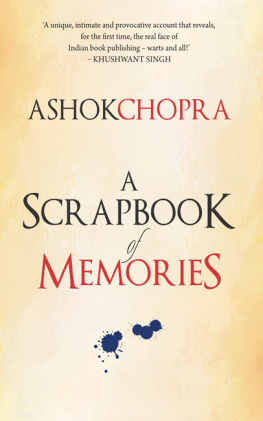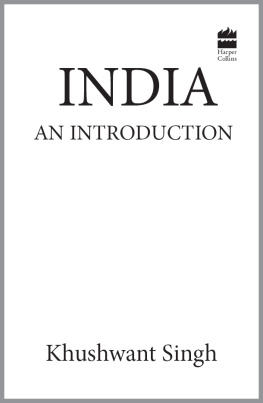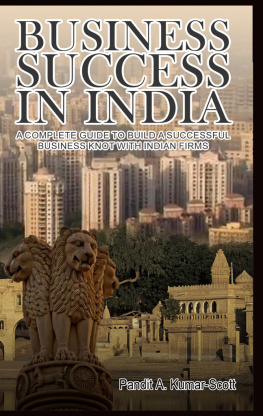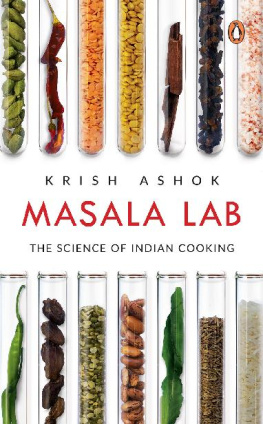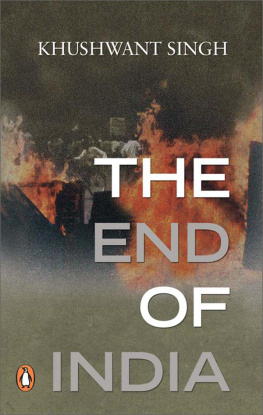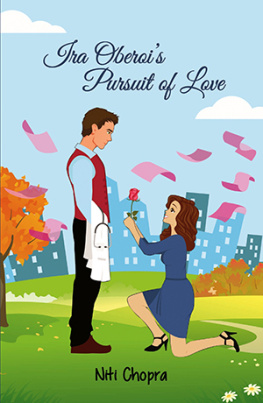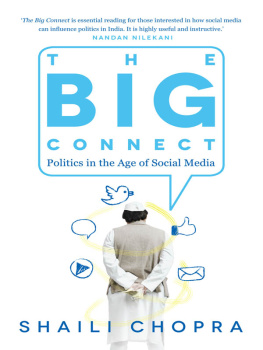
To
Taarini and Jesse, the loves of my life.
For
Lakh Sikand
whom I miss, even today, immensely.
A book must be the axe for the frozen sea within us.
Franz Kafka
CONTENTS

W HO IS A BOOK PUBLISHER?
Is he (the he could well be a she) a dilettante who acts as a middleman between an author and the market, a kind of a facilitator who paves the way for a potential writer to sell his ideas to a select audience? Is he a businessman because publishing is both an art and a business if it has to survive in the harsh business climate of today? Is he a man-about-town who needs a wide range of contacts with the intellectual community and the business world, bringing both together for his own private gain?
A publisher is a man of many parts who cant be slotted into a specific category. Perhaps, it may be easier to state what he is not if only to dispel some notions in the popular mind. A publisher is not a scholar or a pure intellectual who lives on ideas alone; he may have his head in the clouds but is firmly rooted to the ground. He is not a typical businessman who is looking to make a quick buck but he is in the business all the same on a long-term basis. Every successful publisher has been a businessman under the cloak of intellectual pursuits. Clearly, he is a combination of all the questions listed above, and more, with an unerring instinct for what the reader wants, combined with communication skills that would seduce authors to join him in a venture that needs collaborators such as editors, designers, printers and distributors.
A publisher is not born but made and his journey without maps brings him in contact with creative artists who have their own quirks and idiosyncrasies. It is true that the strangeness of human beings is no great news in our times, but a publisher, and his authors, are a breed apart. Their encounters, at times anecdotal, offer an insight into their thinking call it their psyche, if you like which helps us understand them better.
This is not an autobiography. Nor a memoir in the truest sense of the word. It is my journey with, and through, the written word; a journey with the life and times of authors, writers, poets, singers, composers, lyricists, actors, directors, literary agents, publishers and their publishing houses, artists, painters and designers a few of whom I published, others whom I met and interacted with. It is a journey comprising stories of their inner worlds some known, others mostly unknown.
A.C.

Life is not what one lived, but what one remembers and how one remembers it in order to recount it.
Gabriel Garca Mrquez

C HANDIGARH WAS MY FIRST LOVE. IT GAVE ME MY FIRST girlfriend and my first kiss; my first university degree and my first job; my first salary cheque and my first rejection slip; and my best growing-up years and lifelong friends. It is the city that made me discover the romance of the written word. From here started a journey that took me into the hidden and secret, fascinating and enthralling, mysterious and enigmatic, eerie and nebulous world of many creative artistes all of whom have been, and are, an essential part of our literary and cultural world today.

I always picture a city in terms of colour. Mumbai is sea green, Jaipur pink. Delhi is reddish white, Kolkata filthy grey. Chandigarh was born rosy with a tinge of light green. The light green was in the shimmer of its distant Shivalik range of mountains whose shadows covered the huts, the houses, the large bungalows (which the locals call kothis), roads and trees. For most part of the year its sunshine is cool. It filters through the clouds and the trees like the smile of an Arab woman from behind her veil. While in the winters its sunrays are soaked up like sponges, its only in the summer months that it casts off its veil as the sunshine pours down shamelessly. As the city grew, the rosiness was lost. It soon became, on one side, a city of green and white green hedges and white beards while on the other, of more glitz, sound and thunder. Unlike their neighbours in Himachal Pradesh, who, because of the sky that hangs low, muffling the large green state under its heavy weight, move noiselessly, the robust Chandigarhites are noisy and boisterous, roaring with laughter till the blue sky overhead resounds with reverberations.
Chandigarh was built as an organic city functional like the human body. The northern part is its head, comprising three giant buildings: the oval-shaped legislative assembly with its plush interiors and stained-glass windows; on its left is the sleek eight-storey civil secretariat on stilts a honeycomb of ministers, clerks, secretaries, peons and that demigod, the bureaucrat; on its right, the concrete high courts of Punjab and Haryana. From here runs the two-way, long road to Sector 22 the spine of the city. The overbusy Sector 17 is its stomach; the Rose Garden and the Leisure Valley its lungs. And the hairy legs and arms of Chandigarh are its downtown and mushrooming towns of Panchkula and Mohali, and the grumbling shopkeepers, the ever-growing slum and ragged dwellers, respectively.
Chandigarh has a head, lungs, stomach, arms and legs but no feet. A visitor to the city becomes totally immobile. No one knows when and where the local buses run. Their routes and timings are a secret. The bearded taxi driver is ferocious in his talk and outrageous in his fare demands. The autorickshawallah is mostly unwilling and grumbling for he goes on the routes he wants to and not where you have to.
An oval lake, spacious gardens, flowering trees and warm colours made somebody christen Chandigarh, The City Beautiful. Whoever did so must have had a wicked sense of humour for today, just about sixty years after its birth, Chandigarh has everything but beauty.
The French architect, Le Corbusier, had designed the city so that its architecture could mould the peoples taste. He retained the solid texture of the concrete, its roughness, muscles and veins and tried to break its drabness by bright yellows, reds, blues and turquoises. Not once did he realize that the steel-gutted Punjabis and the fierce Haryanvis would mould the architecture to suit their own tastes.
Soon the sleek secretariat was transformed by ugly plywood platforms, partitions, torn posters, musty files, dingy corridors and foul-smelling urinals. Burly sword-wielding jathedars (Sikh preachers), dhoti-clad Punjabi farmers and large-turbaned Haryanvi Jats coupled with swarms of petitioners roamed the corridors whose unswept and unclean corners were painted with paan spit. The lifts cracked and creaked carrying loads of perspiring clerks and peasants, the uncountable sycophants and favour-seekers surrounding the ministers and the all-powerful bureaucrats. The sprawling Panjab University campus and the overcrowded Postgraduate Institute of Medical Education and Research (PGIMER), across the road, became political platforms full of intrigues and counter-intrigues.
Then came another blow. On Tuesday, 1 November 1966, Chandigarh was married to three feudal lords. The three warring husbands Punjab, Haryana, and the Union territory aspiring for the sole proprietorship of this delicate beauty, mauled and battered it badly, in true Punjabi and Haryanvi styles. Political dharnas, agitations and rallies became the order of the day. Checkpoints, barriers, barbed wires, metal drums and wooden obstacles were erected all along the beautiful, wide roads. The young city was fortified. Police and mounted Central Reserve Police Force (CRPF) personnel stood guard. Everyone who was anyone moved around with a battery of gun-wielding security guards in siren-blowing, beacon-flashing vehicles. The number of security personnel sanctioned to an individual became the barometer of status. The beauty queen had turned into an ogre. The City Beautiful turned into A Shitty Beautiful.
Next page
